How Do Sotomayor's Descriptions of Her Family Most Likely Affect Readers?
One of the all-time ways to gear up for the AP Literature exam is to learn about dissimilar literary devices and how you lot tin can utilize them to analyze everything from verse to novels. Not but will this aid y'all on the multiple choice section of the test, it'southward critical for earning perfect scores on your essays, too! Today, we're going to have a closer look at one specific device: point of view. Kickoff, we'll give you lot the point of view definition, then we'll explicate how the work's narrator affects its point of view. Then we'll explicate the four types of bespeak of view and provide examples and analysis for each one. By the end of this article, you'll be a point of view good! So let'due south get started. In literature and poetry, point of view is defined as the perspective from which a story is told. Put another style, a story'southward indicate of view is a way to clear and analyze the position of the narrator in relation to the story they're telling. Is the narrator a participant in the story they're telling? Or are they describing events that happened to someone else? Both of these perspectives are dissimilar types of point of view (which we'll talk virtually in a lot more depth later on in this article, so hang tight)! Then how do you lot figure out the indicate of view in a text? In society to find the point of view of a story, you showtime have to identify whose perspective the story is told from. That's because the perspective of the story determines a piece of literature'south signal of view! That means that in society to establish a text's betoken of view, you have to figure out the narrator of the text first. Okay...and so obviously figuring out the narrator of a piece of literature is important. But what'due south a narrator, exactly? No matter what type of text you lot're reading—whether it'southward a newspaper article, a textbook, a poem, or a best-selling novel—someone is communicating the story to the reader. In literary terms, we phone call that someone the text'due south narrator. In other words, the narrator of a piece of literature is the person telling the story. And you know what's even more than helpful than that? Near all written texts—whether they're fiction, non-fiction, poetry, or otherwise—take a narrator. And since a narrator and point of view go mitt in mitt, that ways that near all texts have a point of view, likewise! So how do you effigy out the narrator of a text? Sometimes the narrator of a text is pretty easy to determine. For example, for a newspaper article, the narrator of the story is patently the reporter who's written the piece to written report the facts. They're the person who followed the story's trail, and now they're sharing the story with you! Another good example of an "piece of cake to find" comes from Herman Melville'south Moby Dick . The very first sentence of the book reads, "Call me Ishmael." Because that's a line in the text rather than a piece of dialogue that uses quotation marks, you know it's the narrator speaking to the audience. In other words, the narrator of Moby Dick identifies himself and tells you his name in the very first line of the volume! Only figuring out the narrator of the text isn't always that piece of cake. For instance, the Harry Potter books by J.Chiliad Rowling don't have an easily identifiable narrator. Neither practise some classic works, like The Giver by Lois Lowry or Pride and Prejudice by Jane Austen. What do you do in those situations? Well, just hang tight: we'll walk you through how bespeak of view can help you effigy out the narrator in these catchy situations! Earlier we start really excavation into point of view, it'south worth pausing a minute to talk about the differences betwixt signal of view and narration. Considering narration and point of view are closely linked, information technology's tempting to call back of them equally interchangeable terms. But the narrator of a text and the point of view of a text are ii different things. The narrator is who is telling the story. In contrast, a text'south point of view is the perspective the story is being told from. If you lot think of the narrator as a person, their bespeak of view is the angle they're taking on the story. Call up of it this way: in literature, signal of view and narrators go together like...well, like thunder and lightning. Yous can't have one without the other, but they're definitely not the aforementioned thing. Okay, let's await more closely at the iv different types of indicate of view found in literature. In the following sections, we'll explain each type of point of view, give y'all tips for figuring out if something is written in that perspective, and so walk y'all through a existent-life instance of that point of view in literature. In first person bespeak of view, you run into the story through the narrator'south eyes In first person signal of view, the story is told from the narrator's perspective. This allows the narrator to give readers their start-mitt experience, including what they saw, felt, thought, heard, said, and did. Think of it kind of like The Blair Witch Projection : in beginning person betoken of view, it's like the narrator is wearing a GoPro camera strapped to their forehead. The reader sees exactly what the narrator sees and gets their singular perspective on the events that unfold. In other words, a first person point of view makes the narrator the eyewitness to the plot of the story. Using a outset person point of view allows an author to swoop much more deeply into the narrator's character, since the reader gets to hear the narrator's inner thoughts and experience the narrator's emotions. Additionally, information technology makes the narrator the chief character, or protagonist, of the story. If something is written in offset person, information technology'south a pretty large indicator that the narrator is going to play a pivotal role in communicating the text'south messages or themes. But there are also some pretty major limitations to a first person point of view, too. Just like real life, readers won't be able to get the thoughts and feelings of other characters in the novel. Also, the narrator's observations might be skewed depending on how they feel near other people. Considering of that, first person narrators can be unreliable, meaning that their perspective skews the accurateness of the story they're telling. That means it'south up to the reader to determine whether they believe the narrator is being true or not. In many ways, a starting time person indicate of view is i of the easiest to option out because information technology uses starting time person pronoun southward, similar I, we, me, my, our, and united states of america. If the volume is written using these terms, and then you can pretty much guarantee that the author is using first person! Go on in mind that not all first person narrators are the book'due south main character, like Moby Dick's Ishmael or The Hunger Games' Katniss Everdeen. That's considering starting time person narrators aren't always the main characters in the piece of work. Accept, for case, the Sherlock Holmes stories, where Dr. John Watson is the narrator. While he'due south an important graphic symbol in the story, he's definitely non the main character--Sherlock Holmes is! Additionally, sometimes get-go person narrators are anonymous, like third person narrators often are. (Don't worry: we'll get into third person narration in just a minute.) That'south why information technology's all-time to expect for pronouns when trying to figure out a piece of work's betoken of view! If you're trying to notice the narrator's name, it might not always be in that location. A good case of this is Shakespeare'southward "Sonnet 130," where the narrator is describing the woman he loves. The narrator of the poem is never named, just because he uses pronouns similar "I" and "my," y'all know information technology's written in starting time person. Many of Shakespeare'south sonnets are written in offset person, and "Sonnet 29" is no dissimilar. Let'due south await at the full poem and see why it qualifies as existence written in commencement person: When, in disgrace with fortune and men'due south eyes, I all alone beweep my outcast land, Think, we tin can tell that something's written in kickoff person if it uses first person pronouns outside of dialogue. Since there's no dialogue in this poem at all, we tin can await at the entire text to observe evidence of the outset person signal of view. Notice that the narrator (or speaker, as the narrator is often referred to in verse) uses words like "I," "me," and "myself" throughout the poem. This is a clear indicator that this poem is written in a first person point of view! Actually, "Sonnet 29" is a good case of something written in first person where the narrator isn't named. Just we can withal learn quite a bit nearly them through the poem itself! For example, nosotros larn that he's an outcast (line 2) who is unhappy with his electric current status (line 4). Despite his extensive misery (line nine), when he thinks upon his love, his spirits are lifted (lines 10, 11, and 12). As we start piecing the evidence together, we begin to become a clearer picture of who the narrator of the verse form is, and the power honey has to lift united states of america out of even the bleakest circumstance. Other Works Written in First Person Signal of View Showtime person is a really popular writing technique, so it'south no surprise that at that place are tons of books written in this point of view! Here are a few other poems, books, and book series that you lot might be familiar with that use commencement person indicate of view: Second person indicate of view uses pronouns like "you" and "your" to tell the story. In 2nd person point of view, the story is told from the perspective of another character. Sometimes this graphic symbol is another person in the book, but it can besides be the reader themselves! More importantly, when a writer uses 2nd person, they want readers to connect emotionally with the topic they're writing about! Hither's an example of what nosotros hateful. Say y'all're reading an commodity about the corporeality of plastic pollution in the ocean. If the writer wants to pull on your heartstrings and make you have the issue they're writing virtually seriously, they might employ a second person point of view and write something similar this: "Imagine you lot're on the holiday of your dreams sailing across the Caribbean area. You lot can't look to become out into the open up water, where everything will be calm, peaceful, and gorgeous. You take a nap as the captain sets sheet, and when you return to the deck, you're shocked by what you meet. Instead of a vast expanse of sparkling blueish water, you see a huge, bobbing mound of trash. Fast nutrient containers, plastic bags, and discarded water bottles bob along the surface as far as you can meet. Information technology looks like y'all're sailing through a garbage dump, and you experience equal parts disgust and despair." Using the second person bespeak of view in a passage puts the reader into the story—in this case, it's a story about pollution. Second person makes the reader experience like they're making every motility...from the joy of going on vacation, to the shock of seeing and then much plastic in the h2o, to the "disgust and despair" of realizing what pollution is doing to the sea. Suddenly, the reader becomes more invested in what the author has to say well-nigh the trouble, since the second person point of view makes them feel like they've experienced information technology first-mitt! While it's very rare to find a text that's written completely in 2d person, many authors volition switch to this perspective when they want readers to feel connected to the topic they're writing about. Similar beginning person point of view, information technology's pretty easy to spot the second person point of view...when you lot know what you're looking for, that is. When something is written in 2d person, the writer uses second person pronouns (similar "you," "yourself," and "your") in the text that falls outside of dialogue, also. Like we only mentioned, it's pretty rare to observe a whole text that's written this mode. More probable, you'll observe a few paragraphs written in second person, rather than an entire work. The one exception to this dominion is the classic Cull Your Own Chance book ! You lot probably remember these from when yous were a kid: each volume had a topic, and at the bottom of each page, you were given decisions to make. Depending on what you chose, you'd flip to a unlike page in the book, and your decisions would affect the story! Jay McInerny uses second person to open his book, Vivid Lights, Big City , which tells the story of life in the fast lane in 1980s New York. Permit's expect at the first paragraph to meet the second person point of view in action: You lot are not the kind of guy who would be at a place like this at this time of the morning. How did you get hither? Information technology was your friend Tad Allagash. Your encephalon is rushing with Brazilian marching powder. You are talking to a girl with a shaved caput. You want to see the kind of girl who isn't going to be here. Yous want to read the kind of fiction this isn't. You give the daughter some powder. She still doesn't want you. Things were fine once. And so you lot got married. Notice that all the pronouns in this section are either "yous" or "your," which is a clear indicator that this is written in second person! It'due south as well a good example of how using second person can immediately pull someone into a narrative by making the reader and the main graphic symbol one in the aforementioned. In this case, McInerny is creating a whole backstory for your grapheme—from giving yous friends like Tad to hinting at your dysfunctional marriage. 2nd person is probably the rarest of the points of view. Ordinarily writers will use second person in sections of their piece of work to emphasize a point, rather than throughout their entire work. Here are some pieces of literature that apply a 2nd person point of view (at to the lowest degree in office): In third person omniscient indicate of view, the narrator is god-like and tells the reader everything! The third type of perspective you tin can find in literature is a third person omniscient point of view. In third person all-seeing, the narrator uses 3rd person pronouns like "he," "she," "they," and "their" to refer to all the characters in the work. As a result, the narrator removes themselves as a disquisitional character in the work (unlike the narrators that use a showtime or second person point of view). Additionally, because this is a tertiary person omniscient perspective, the narrator is given god-like qualities over the story. (Merriam-Webster defines an "omniscient" person as someone who has "universal or complete knowledge"!) That means the narrator tin dive into whatever grapheme's head and share their thoughts and emotions with the reader. Additionally, the narrator can move around in time and place to show the reader events that the characters themselves may not be aware of! That includes jumping around from location to location, or even moving backward and frontward in time. Using a 3rd person all-seeing narrator lets an writer show the reader the whole gameboard, so to speak. There'due south no real limit to what a narrator can show the readers! Consequently, it allows the writer to build a robust world full of well-adult characters, since the author no longer has to contend with the single-graphic symbol limits of a first or second person point of view. It'southward likewise a particularly useful technique in works with large casts of characters, since the narrator can introduce the reader to each character more than quickly—and with more than particular—than other points of view would allow! The narrator of George Eliot's Victorian novel, Middlemarch, is an excellent example of how a third person omniscient narrator can give readers a comprehensive view of a text. Let'south take a look at the book's opening paragraph to run across this blazon of point of view in action: Miss Brooke had that kind of beauty which seems to be thrown into relief by poor dress. Her hand and wrist were so finely formed that she could clothing sleeves not less bare of style than those in which the Blessed Virgin appeared to Italian painters; and her profile as well every bit her stature and bearing seemed to gain the more dignity from her plain garments, which past the side of provincial manner gave her the impressiveness of a fine quotation from the Bible,—or from i of our elderberry poets,—in a paragraph of to-twenty-four hours's newspaper. She was usually spoken of as being remarkably clever, but with the addition that her sister Celia had more common-sense. All the same, Celia wore scarcely more than trimmings; and it was only to close observers that her dress differed from her sister'south, and had a shade of coquetry in its arrangements; for Miss Brooke's manifestly dressing was due to mixed weather condition, in near of which her sis shared. The pride of being ladies had something to do with it: the Brooke connections, though non exactly aristocratic, were unquestionably "good:" if you inquired backward for a generation or two, yous would non find any chiliad-measuring or bundle-tying forefathers—anything lower than an admiral or a clergyman; and at that place was fifty-fifty an ancestor discernible as a Puritan gentleman who served under Cromwell, but afterwards conformed, and managed to come out of all political troubles equally the proprietor of a respectable family estate. Immature women of such birth, living in a quiet state-firm, and attending a village church building hardly larger than a parlor, naturally regarded frippery equally the appetite of a huckster's daughter. Remember: omniscient narrators are god-like in that they can give you more information than a single character could provide from their limited perspective. In this case, Eliot's omniscient narrator gives u.s.a. tons of data about Miss Brooke. We know that she'south cute but non financially well off ( the narrator calls this living in "mixed atmospheric condition"), which is reflected in her "plain garments." Regardless, Miss Brooke is also "remarkably clever." Beyond that, the narrator tells united states of america near Miss Brooke'south family by looking into her past—which is easy given that the narrator is omniscient! We learn that she and her sister, Celia, aren't aristocratic, but they come from a good family that includes admirals, clergymen, and politicians. This helps Eliot develop characters and situations speedily, which is of import in a book with a large cast of characters like Middlemarch. Tertiary person omniscient is a common signal of view, especially in longer texts. Hither are some examples of other works that characteristic an all-seeing point of view: In third person limited point of view, it's every bit if the narrator is standing backside 1 character's shoulder. The last indicate of view an author can use is the third person limited point of view. Just like the all-seeing perspective we talked about before, texts written in a 3rd person limited signal of view use third person pronouns to hash out characters outside of dialogue. The divergence betwixt the two is in how much information the narrator shares with the reader. With a third person limited perspective, the narrator is express to giving yous the perspective of a single grapheme. The narrator can peek inside the character's caput to share their thoughts, feelings, and experiences, similar to a showtime person point of view. Unlike first person, however, a narrator using a third person limited bespeak of view can as well zoom out to give readers a improve understanding of how the character they're post-obit fits into the text's plot, setting, or situation! With a tertiary person limited point of view, on the other paw, information technology's like the narrator is standing behind one character and filming over his shoulder. Non only can y'all become a sense of what the character is seeing, the narrator tin likewise step back a little chip to testify readers what's going on around the character...as long as the graphic symbol stays in the frame. Tertiary person omniscient is the virtually comprehensive view. It'south every bit if the narrator is filming from the rafters of the building. They can zoom out to show everyone for a global perspective, or they tin can zoom in on different events to give y'all a better idea of what'south happening in specific situations. Then why would a author use a third person limited betoken of view? Well, information technology's peachy for situations where knowing every single detail of a story would spoil the plot. Mystery novels, for instance, oftentimes use third person express indicate of view. It allows the narrator to requite you the detective'southward thoughts and feelings while non spoiling the whodunit! Information technology likewise allows the writer to focus on developing a single grapheme while giving readers a better view of what's going on around that character. Hermione took out a list of subjects and titles she had decided to search while Ron strode off downwards a row of books and started pulling them off the shelves at random. Harry wandered over to the Restricted Section. He had been wondering for a while if Flamel wasn't somewhere in there. Unfortunately, yous needed a particularly signed note from one of the teachers to expect in any of the restricted books, and he knew he'd never get one. These were the books containing powerful Nighttime Magic never taught at Hogwarts, and only read past older students studying advanced Defence force Against the Dark Arts. It's clear that this passage is written in third person: the narrator uses pronouns like "he," "she," and "them," instead of first person pronouns like "I" or 2d person pronouns like "you." But how exercise we know information technology's third person limited? Well, we become Harry'due south thoughts and feelings—like his marvel almost Nicholas Flamel—but no 1 else's. We don't know what Hermione and Ron are reading, or if they're excited, nervous, or scared. Rowling wrote all seven Harry Potter books using a third person limited betoken of view that fabricated Harry the focal betoken. The narrator can tell us what Harry's thinking, feeling, and seeing—equally well as zoom out to tell united states more than nearly the precarious situations he finds himself in. Only because the narrator is tied to Harry, they can't give us a glimpse into other characters' minds, nor can it show readers what'due south happening in other parts of Hogwarts (where Harry isn't). That helps readers get to know Harry, fifty-fifty as it helps Rowling maintain the mystery effectually the sorcerer's stone (or the chamber of secrets, or the half-blood prince, etc.). If y'all're studying for the AP Literature exam, you'll need to know about more literary devices than point of view. Why not cheque out our other comprehensive guides, like this i on personification? The more familiar y'all are with literary terms, what they mean, and how to employ them, the better your exam score will exist! Did yous know that there are two English language AP tests? One is the literature examination, which focuses on literary analysis and comprehension. The 2d test is the language test, which tests your power to understand argument and write persuasively. Click here to larn more about the AP Language exam, how it differs from the literature exam, and what you need to do to knock it out of the park! After y'all learn the fundamentals, the best way to prepare for an AP exam is to have practice tests. Check out this article on how to find the best AP exercise exams, and learn how to utilize them to heave your score!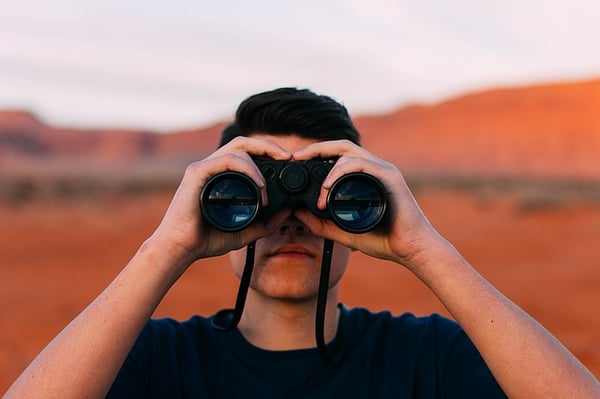
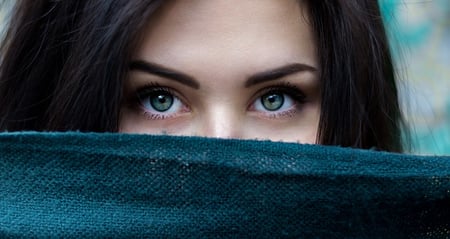
Indicate of View: Definition and Pregnant
What Is a Narrator?
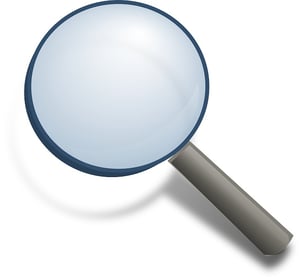
Finding the Narrator
Narrator vs. Betoken of View: What's the Difference?
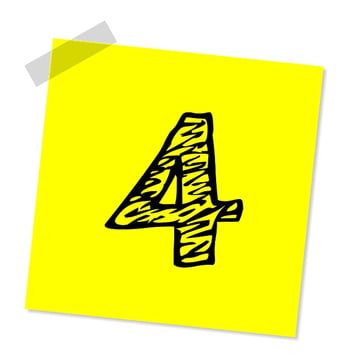
The 4 Types of Point of View

First Person Point of View
Tips for Identifying Start Person Point of View
Example of First Person Point of View: Shakespeare's "Sonnet 29"
And problem deaf heaven with my abortive cries,
And look upon myself and expletive my fate,
Wishing me like to one more rich in promise,
Featured like him, like him with friends possessed,
Desiring this man's art and that man's scope,
With what I most enjoy contented least;
However in these thoughts myself well-nigh despising,
Haply I think on thee, and and then my land,
(Like to the distraction at break of day arising
From sullen earth) sings hymns at heaven's gate;
For thy sweet beloved remembered such wealth brings
That then I scorn to change my state with kings.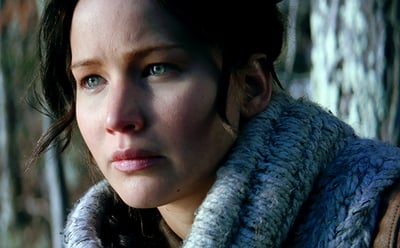

Second Person Point of View
Tips for Identifying Second Person Betoken of View
Example of Second Person Point of View: Bright Lights, Big City by Jay McInerny
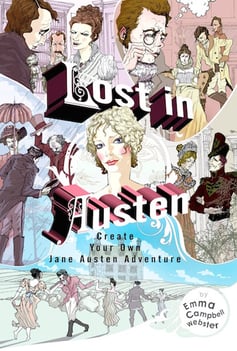
Other Works Written in Second Person Point of View

Third Person All-seeing Point of View
Example of Third Person Omniscient Point of View: Middlemarch past George Eliot
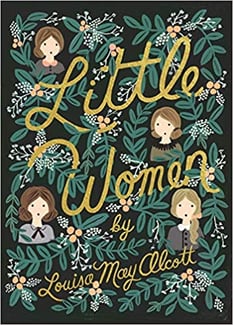
Other Works Written in 3rd Person Omniscient Point of View

3rd Person Limited Signal of View
Here's an piece of cake way of agreement the difference between a first person, third person omniscient, and a third person limited point of view. Remember of the narrator as a person holding a camera. You, as the reader, get to see everything the camera sees. With showtime person point of view, it'due south like the character has had the photographic camera implanted in their brain. You can see whatever the character looks at and nothing more.
Case of Third Person Express Betoken of View: Harry Potter and the Wizard'south Stone by J.K. Rowling
Like nosotros mentioned earlier, all texts accept a bespeak of view...which ways that the Harry Potter stories practise, as well! Let's look at a passage from Harry Potter and the Sorcerer's Stone to become a better idea of how a tertiary person limited point of view works. In this scene, Harry and his friends, Hermione and Ron, are looking through the library to learn more about the sorcerer'south rock: 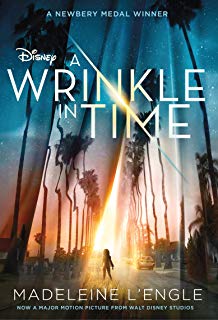
Other Works Written in Third Person Limited Point of View
The tertiary person limited point of view is a pop perspective for writers to use, so there's no shortage of examples! Here are a few works yous might be familiar with that feature a tertiary person limited indicate of view:
What's Next?

About the Author
Ashley Sufflé Robinson has a Ph.D. in 19th Century English Literature. As a content writer for PrepScholar, Ashley is passionate nigh giving college-bound students the in-depth information they demand to become into the school of their dreams.
Source: https://blog.prepscholar.com/point-of-view
Post a Comment for "How Do Sotomayor's Descriptions of Her Family Most Likely Affect Readers?"